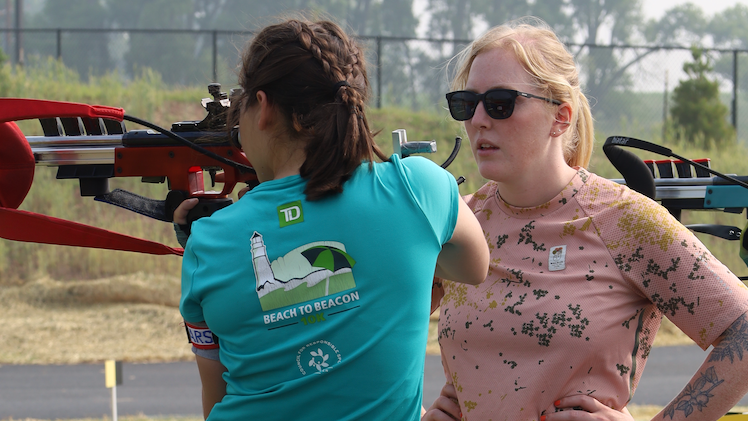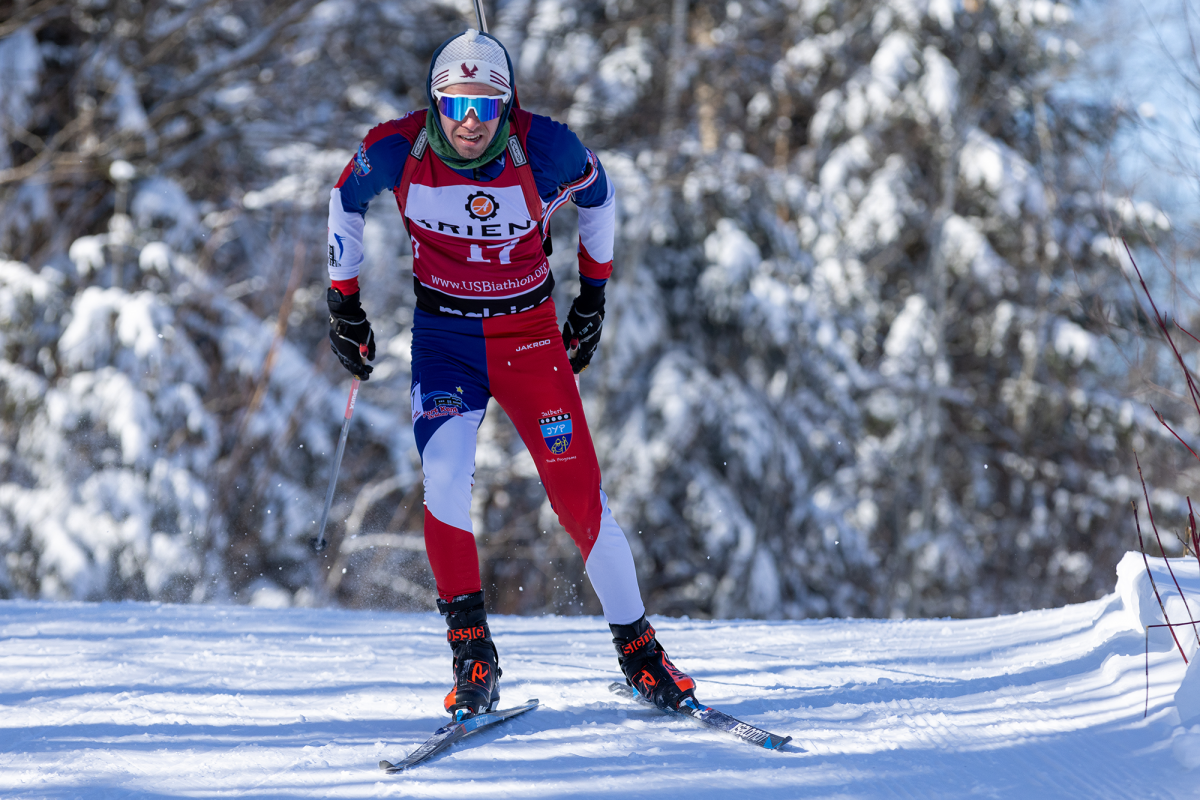
RUHPOLDING, Germany – The U.S. men’s relay team had high hopes coming into Friday’s 4 x 7.5 kilometer relay.
At last year’s World Championships in Khanty-Mansiysk, Russia, the team turned in one of the most surprising relay performances of the week, placing sixth after losing a photo finish with Italy just 38 seconds behind the victorious team from Norway. The Americans had been seeded 14th and not considered a threat in the race.

This year, expectations were raised. The U.S. started the exact same team they used in the relay last year. The three veterans on the squad, Lowell Bailey, Jay Hakkinen, and Tim Burke, had all finished in the top ten in World Cup competition this season, and were having much better years than in 2011. Anchor Leif Nordgren, the team’s youngest member, had missed much of the season due to illness and finished a frustrating 81st in his lone World Championships start, but seemed to be on the upswing.
But in the end, said Nordgren, things just didn’t come together the way they had in Khanty-Mansiysk, where shooting conditions had been challenging and the team’s errors were matched or surpassed by those of other squads.
“It takes all four guys having decent races on the same day, and that’s hard to do in biathlon,” Nordgren said. “It wasn’t a disaster, but we know we can do better. That’s kind of the way all the relays have gone this year.”
The U.S. placed tenth, and the general consensus from both athletes and coaches was that it was a good result – not great, and not bad. The Norwegians won again, but this time the Americans trailed them by more than three minutes.
“It was not the best day on the range, but we were able to clean everything, so it was an average performance,” said U.S. shooting coach Armin Auchentaller, referring to the fact that the team avoided the penalty loop thanks to 14 spare rounds. “In the end it was a good tenth place, but we know we can do much more and our potential is for sure top six. But we are cautious about that, so we are kind of happy.”

Lowell Bailey had led the team off with a strong scramble leg, cleaning prone easily and using a single spare round in standing. He spent much of the race skiing in packs and keeping close track of his competitors’ pacing; like many scramble legs, this relay started out with large groups of racers skiing in close quarters, even after two shooting bouts. Bailey tagged off in seventh, 13 seconds behind leader Anton Shipulin of Russia.
“Lowell had a world class performance for sure,” Auchentaller said. “He’s our first guy, and he always does a good job.”
The others, Auchentaller said, used “a few too many spare rounds.” That trend started with Hakkinen, who during the second leg needed all three spares in each stage to turn his targets white. He lost about a minute on the leaders and tagged off in 11th.
When Burke took over, he was able to improve on that slightly, using only two spares in each stage. He also turned in the third-fastest ski time of all the third-leg racers, and climbed up two spots to ninth.
While Burke was happy with his skiing, he told FasterSkier at the finish line that he was frustrated with the spare rounds. Like Auchentaller, he classified the team’s performance up to that point as fairly average, but not the great effort they had hoped for.

When Nordgren took over, he couldn’t produce the fireworks that had moved the U.S from eighth to sixth in Khanty-Mansiysk. But did about as well as the team could have hoped given that the individual race had been his first top-level competition since World Cup four in Oberhof in early January. Nordgren cleaned prone with no spares, then used all three in standing; he skied the 12th-fastest anchor time in a race that he said was fairly tactical.
“On the first two loops I went fairly easy to stay with the guys who were around me, and the last loop I went as hard as I could,” he said. “I went a little too late; I should have gone with the Czech guy [Odrej Moravec, who moved from 12th to ninth] from the beginning, right out of the range, but I didn’t know where he was going to pass… but it was good.”
Overall, Nordgren was happy with his performance.

“It was a good race for me – I had maybe one too many extras in standing,” he said. “My legs were shaking like mad, and I think I was fairly lucky to get that last one down.”
Auchentaller said that despite the three spares, Norgren had actually come “close to cleaning” the standing stage; his last shot in his original clip had split, meaning that part of the bullet hit the black part of the target, but not enough to turn it white. He then needed the spares to finish his work.
“He had a solid anchor leg I must say, I am really proud about him,” Auchentaller said.
While the team considered their performance merely okay, both Burke and Nordgren said that as expected, the relay had been a lot of fun, perhaps more so than the individual races.
“It was great,” Burke said. “There were so many people out there, all around the course. It was so loud that you couldn’t even really hear what the coaches were telling you.”
Not that it posed a problem on Saturday.
“What are they really telling you?” Burke laughed about mass-start racing. “You just try to go as hard as you can.”




